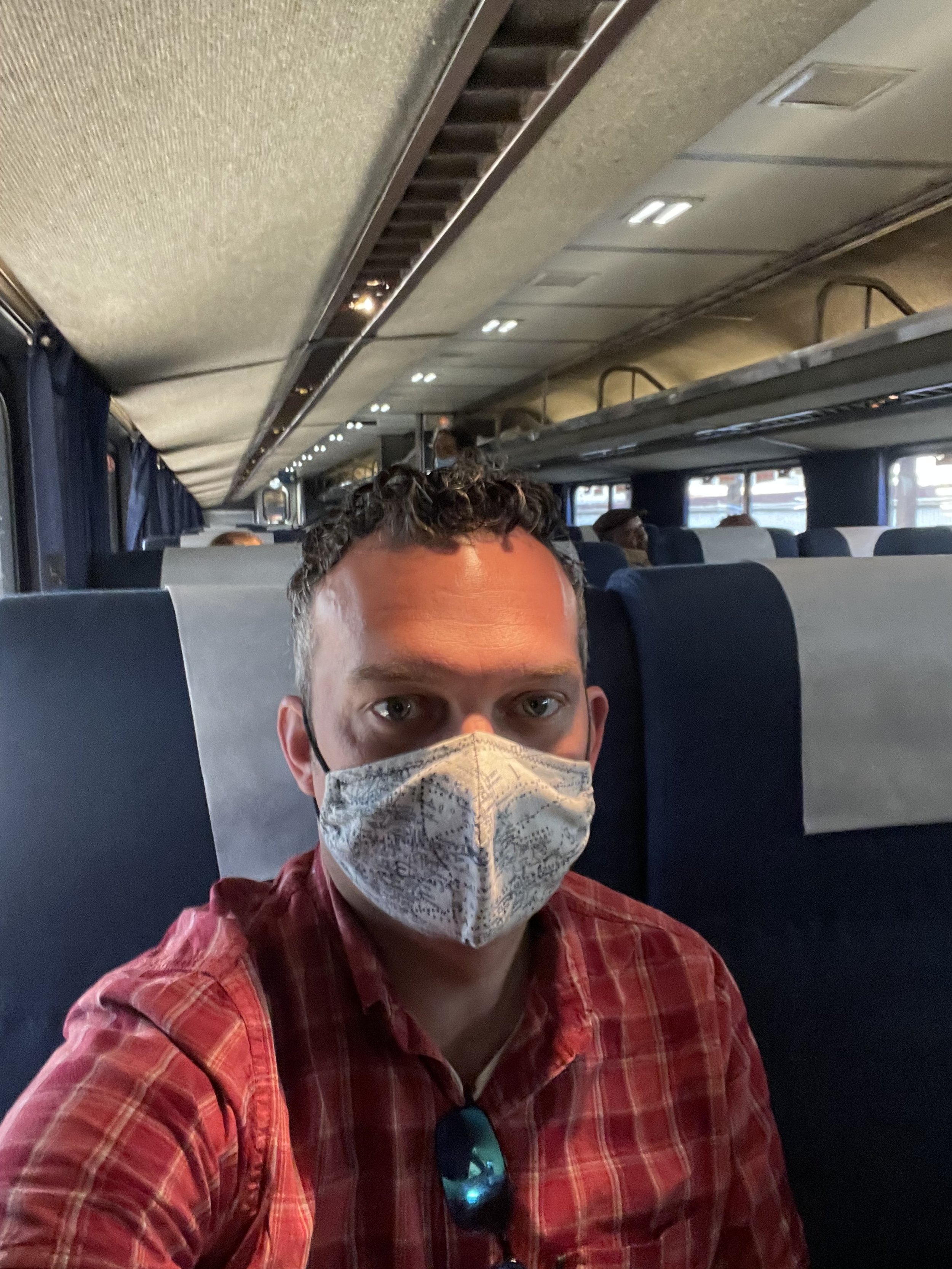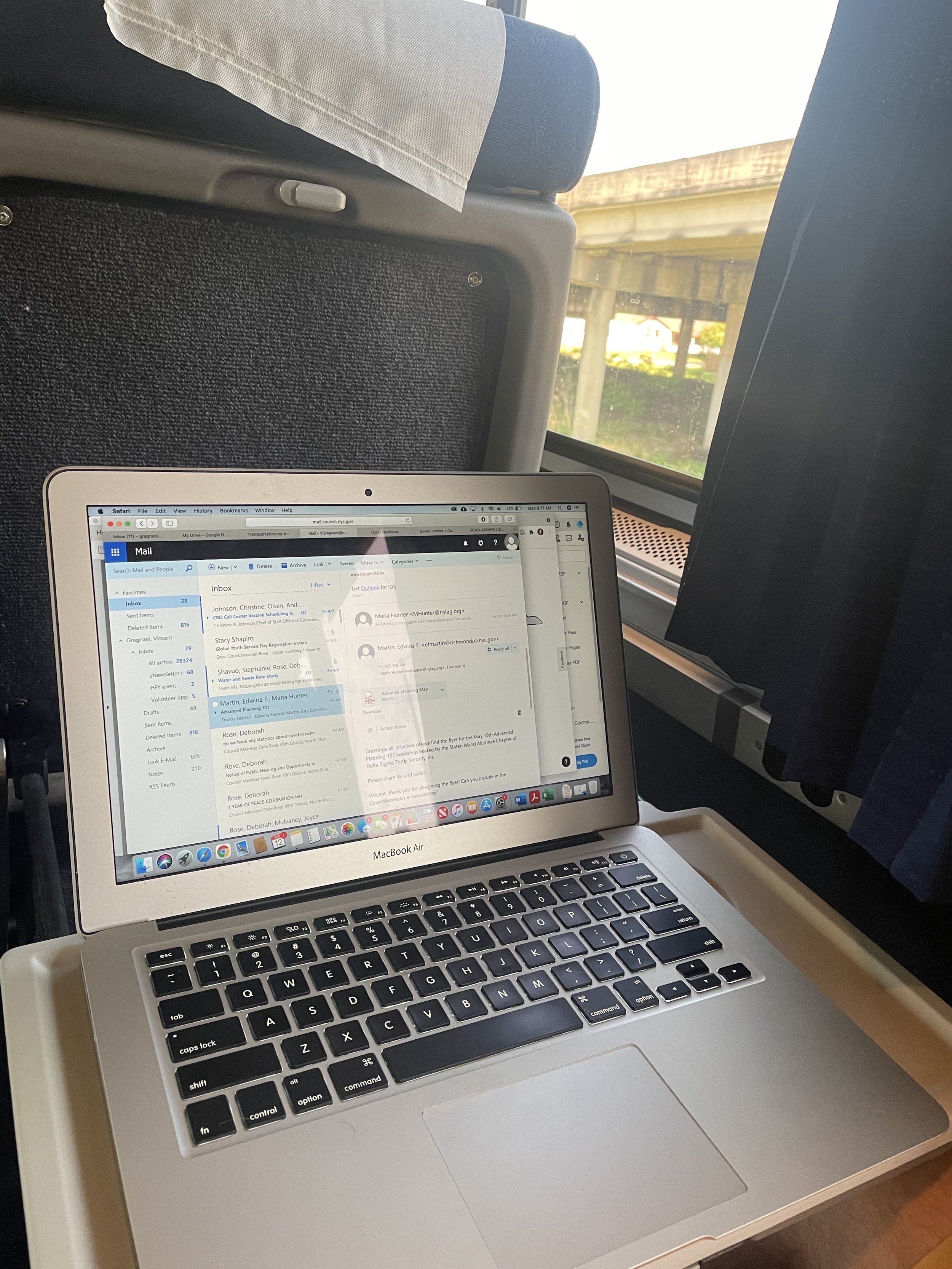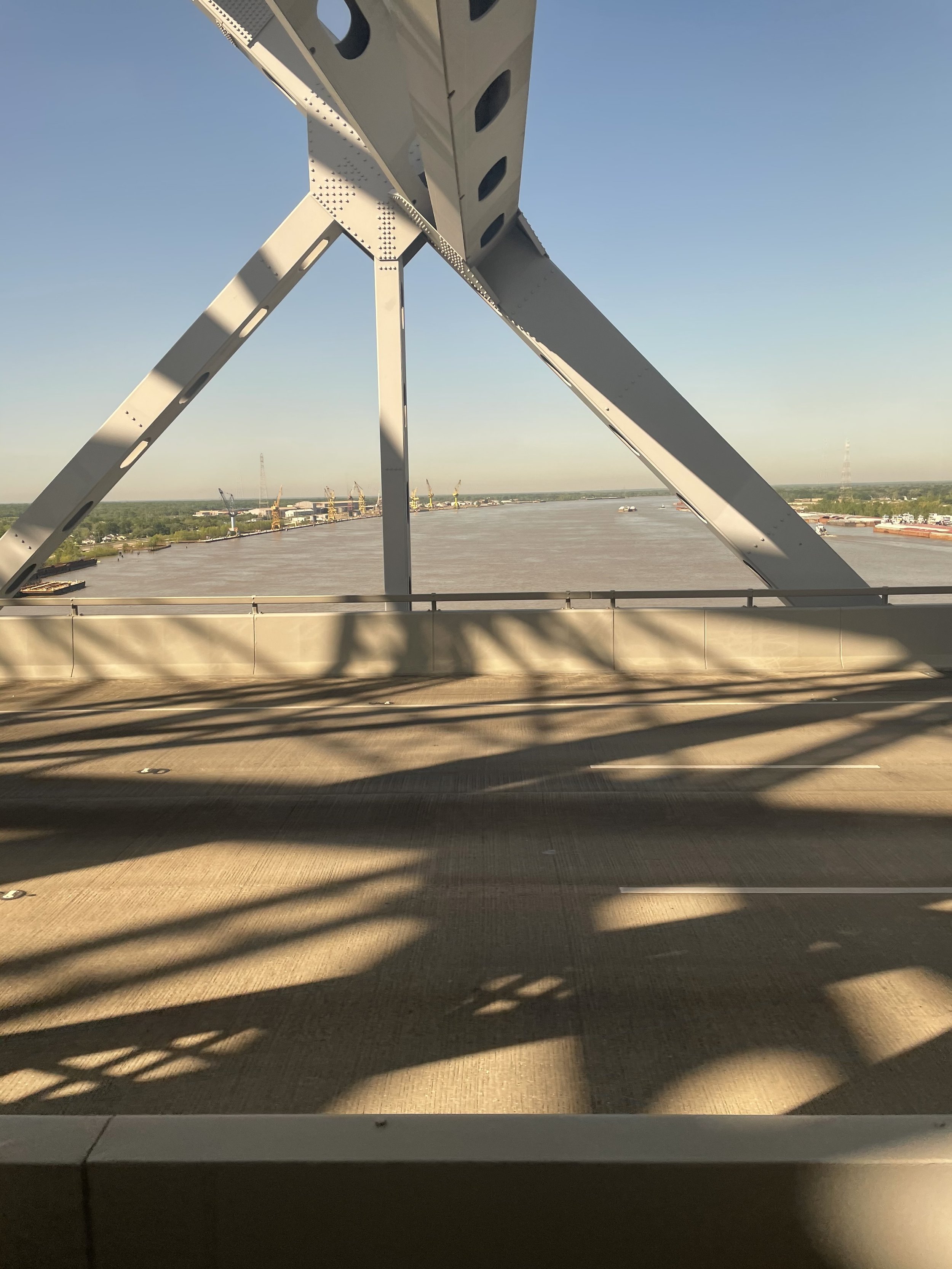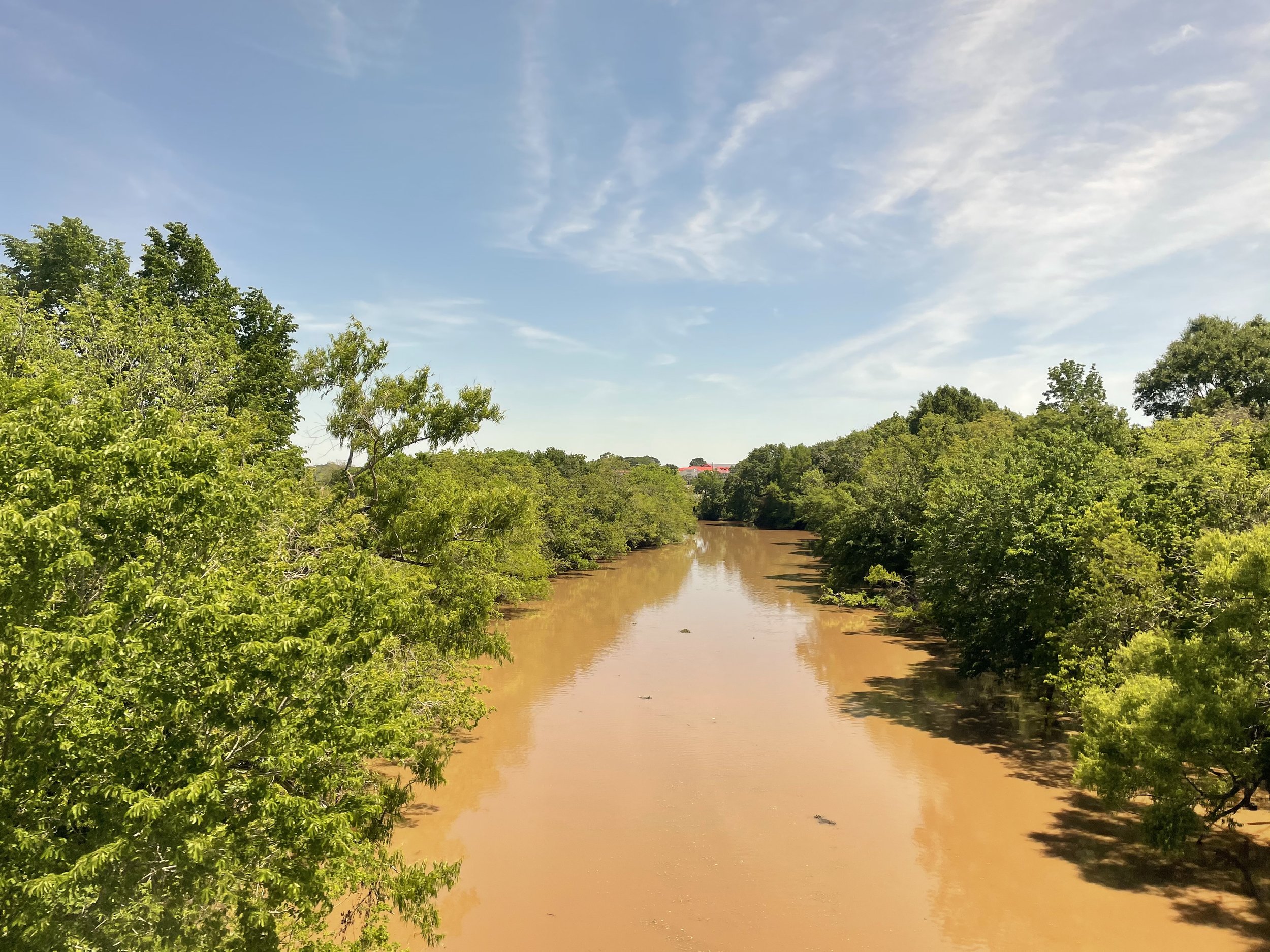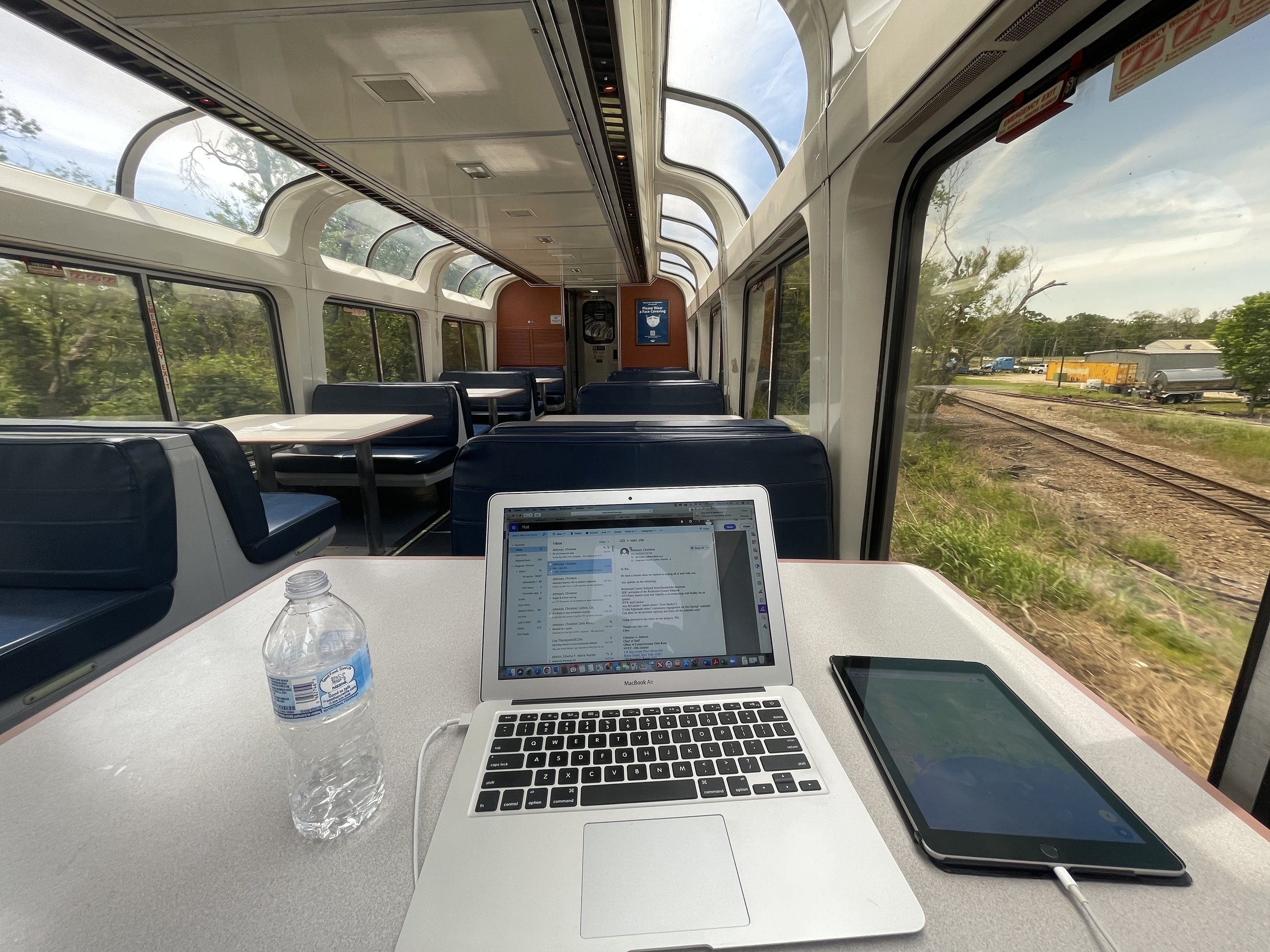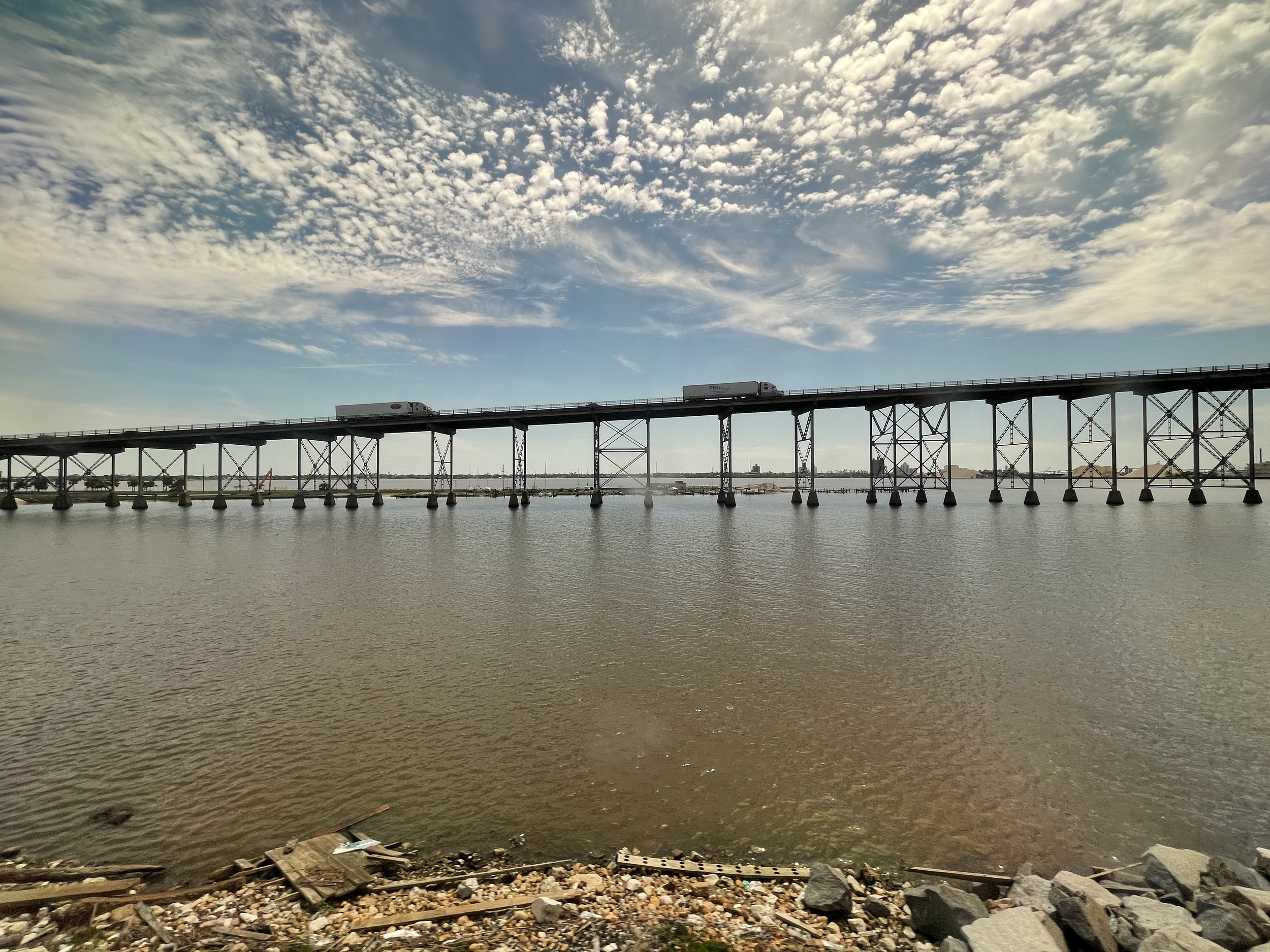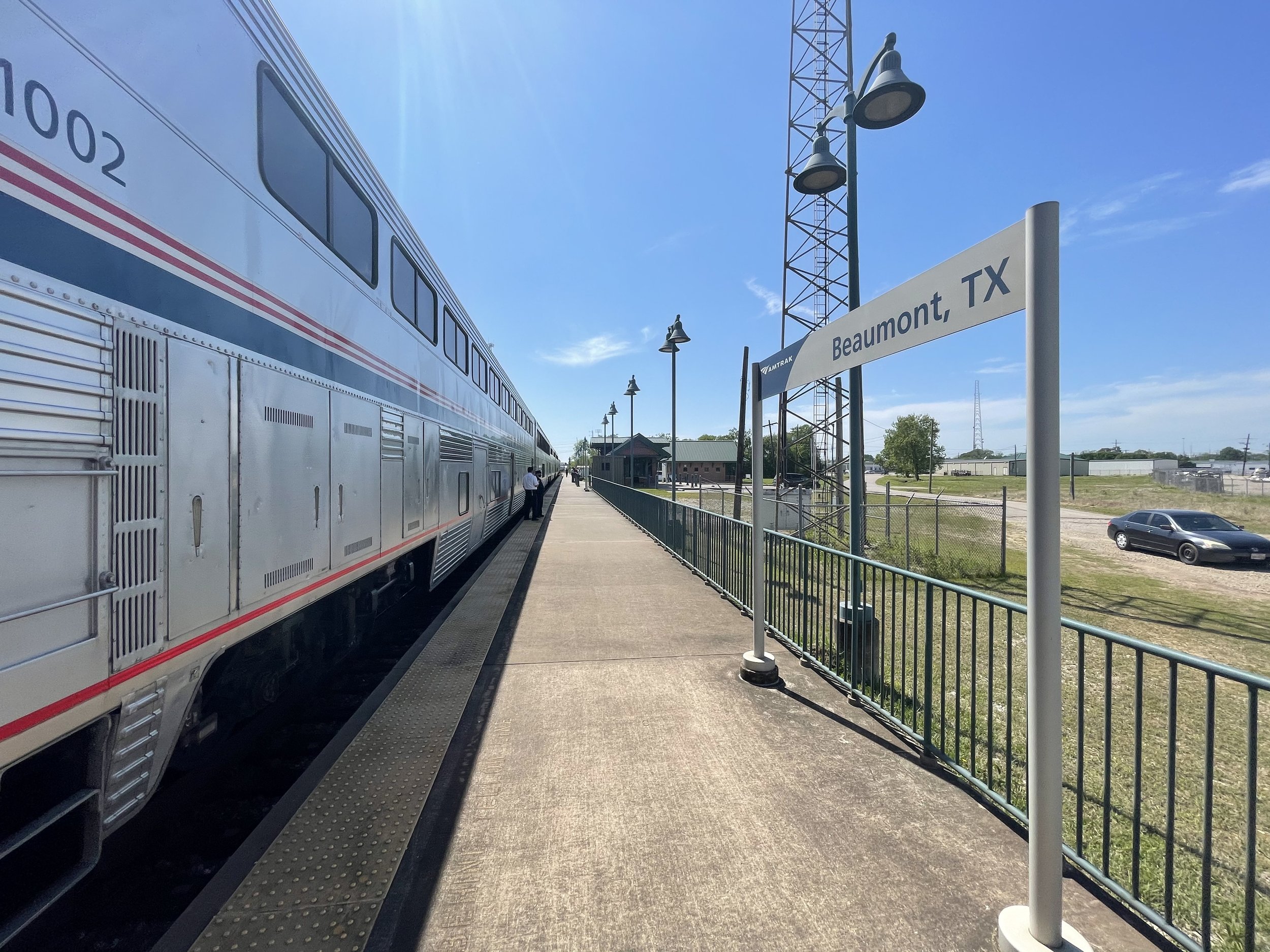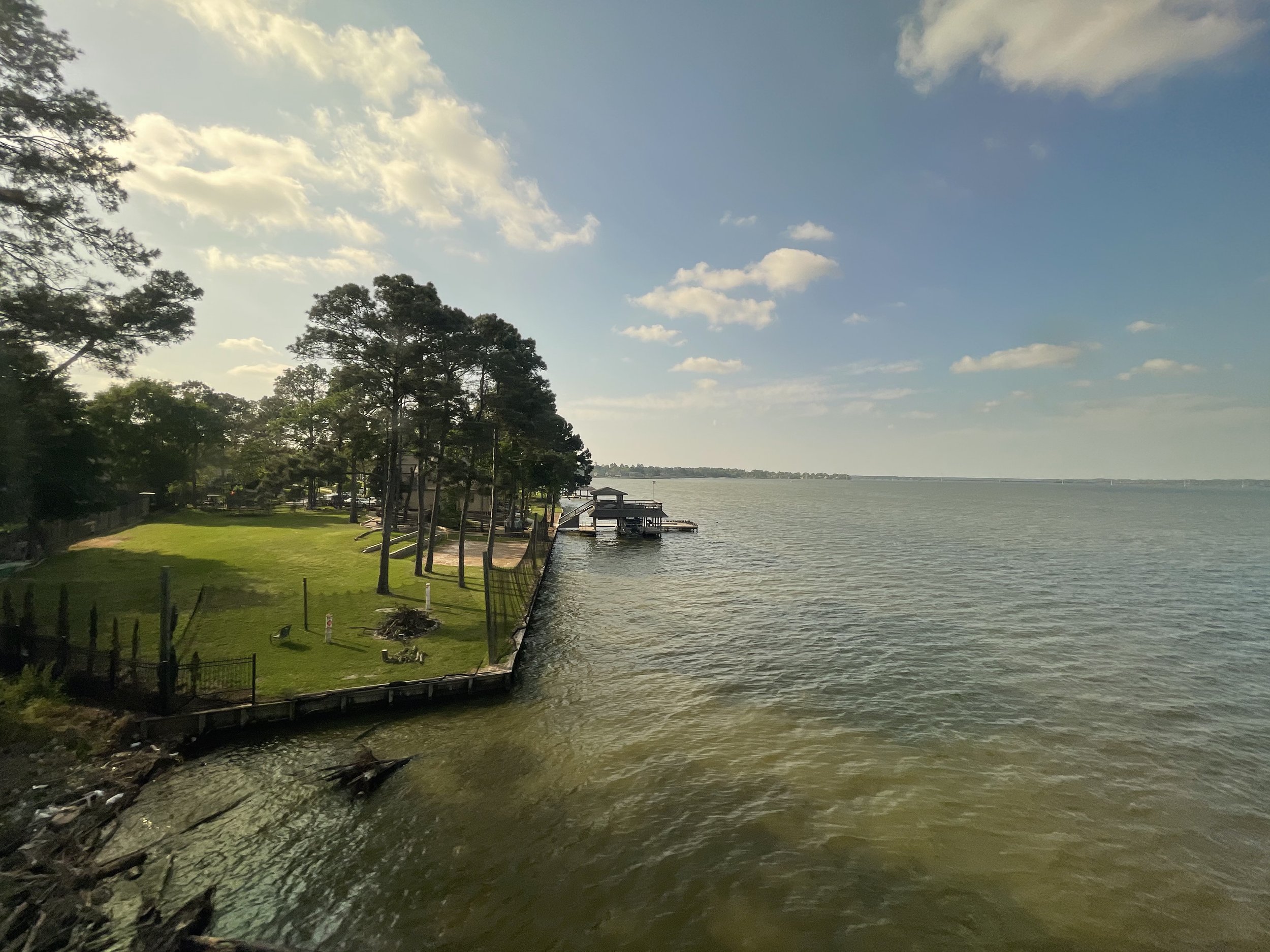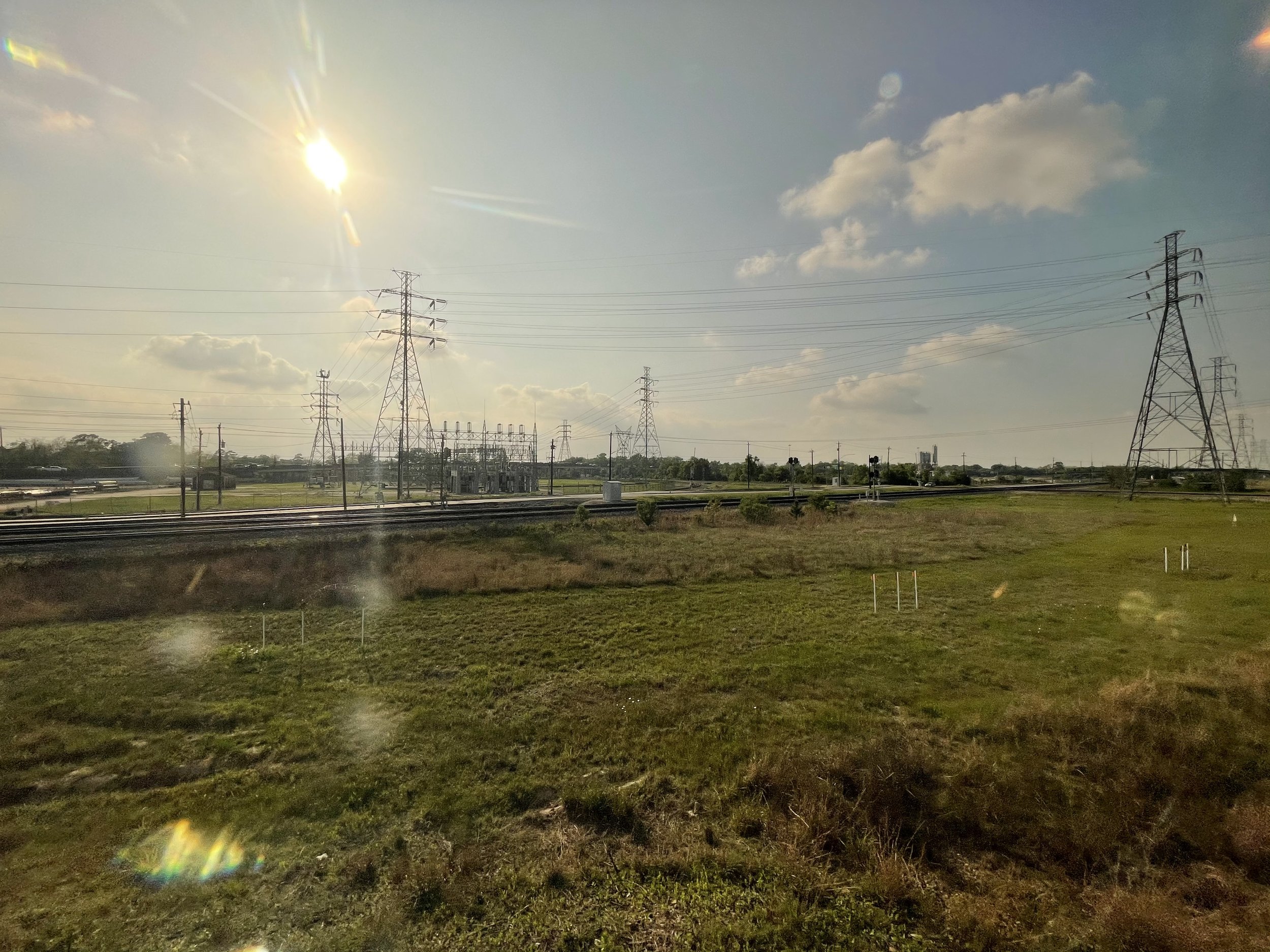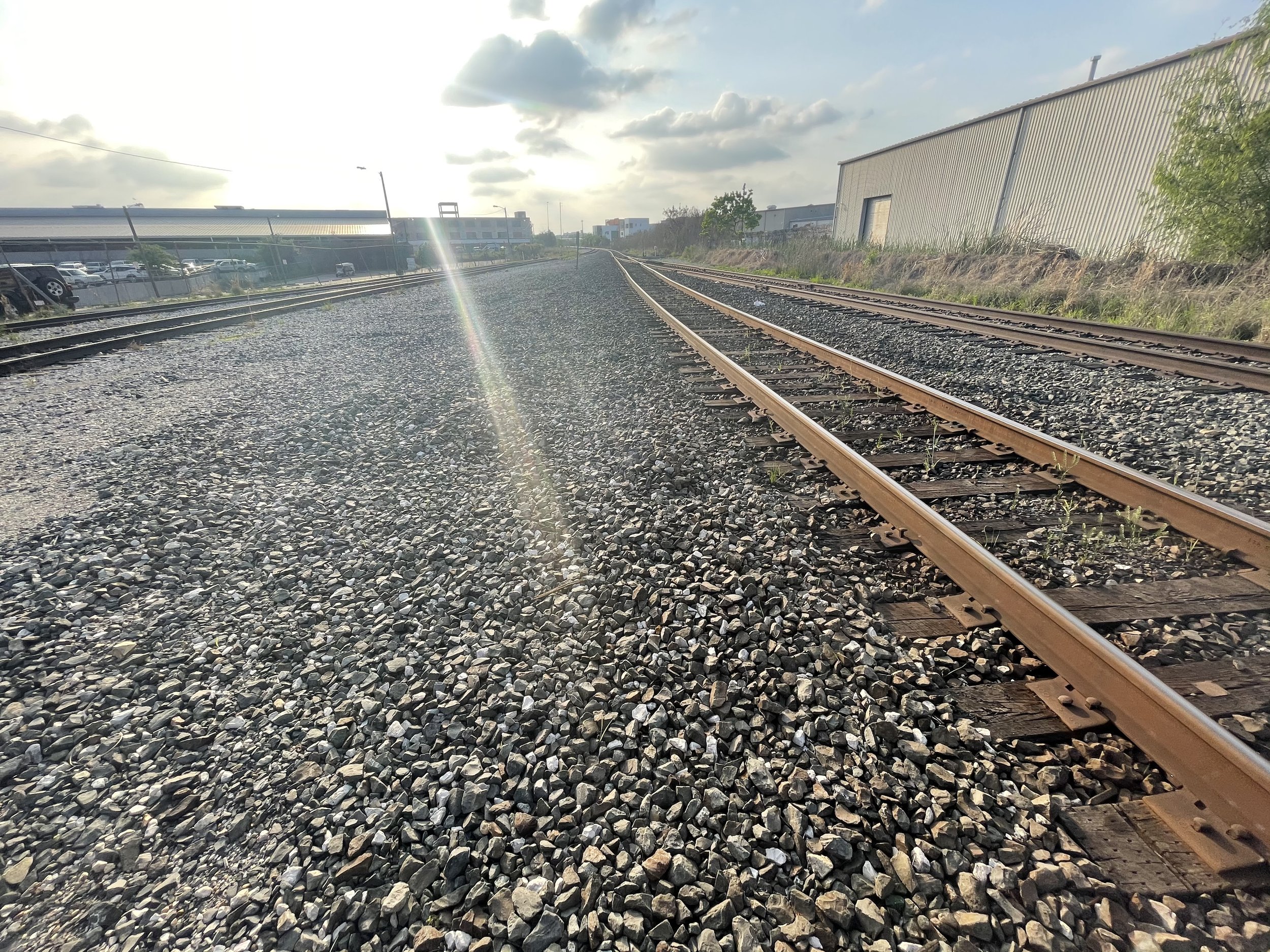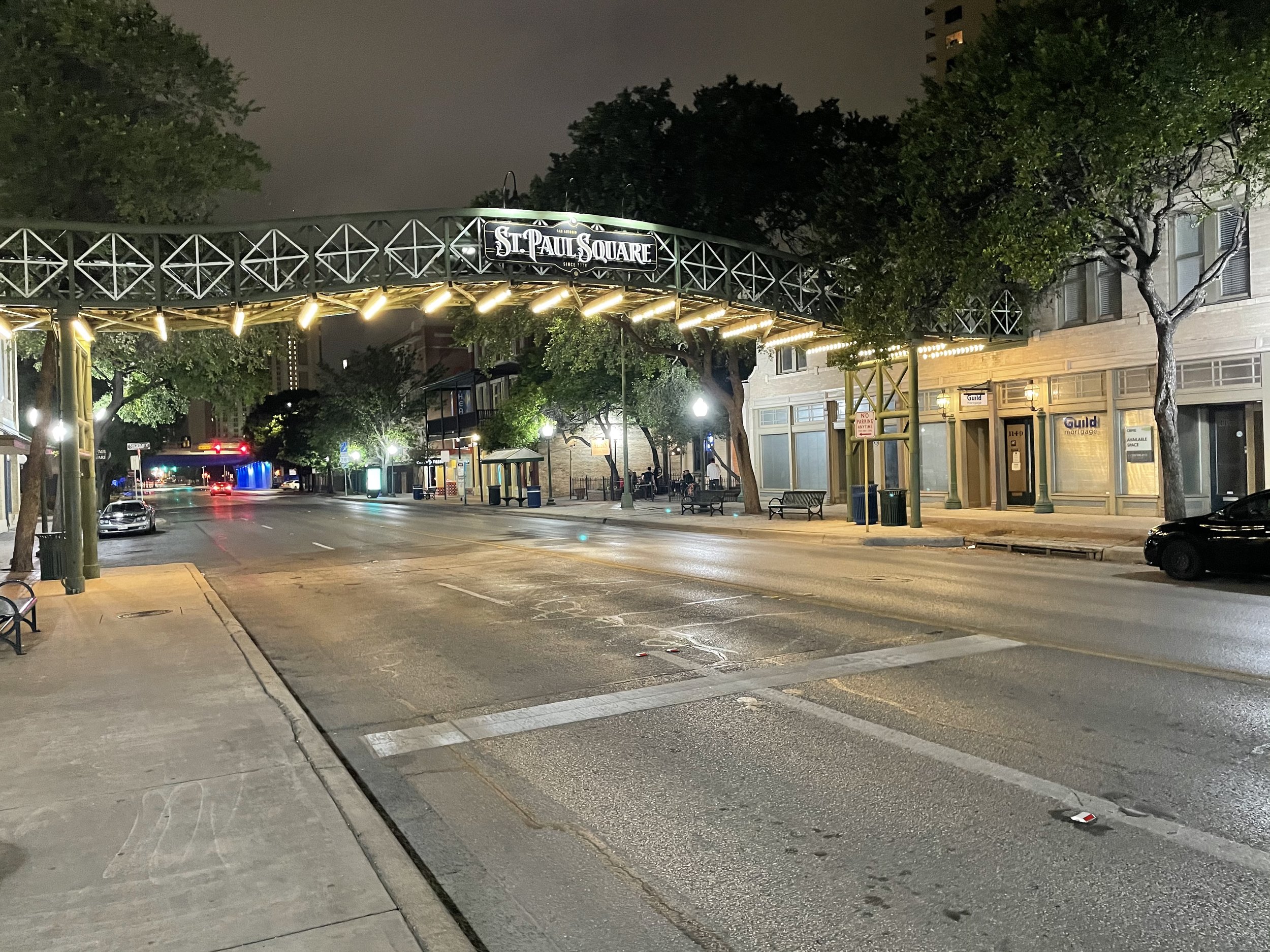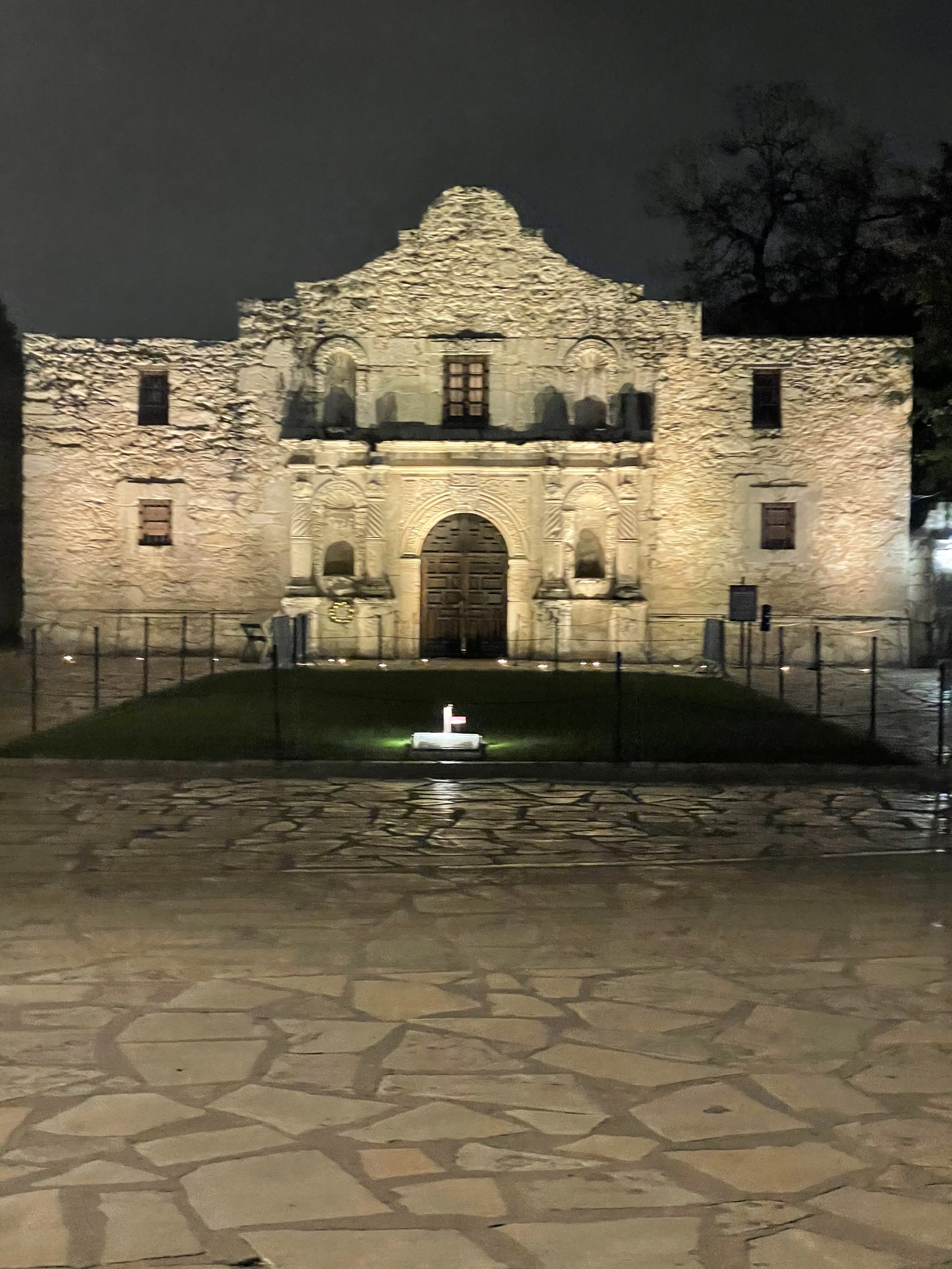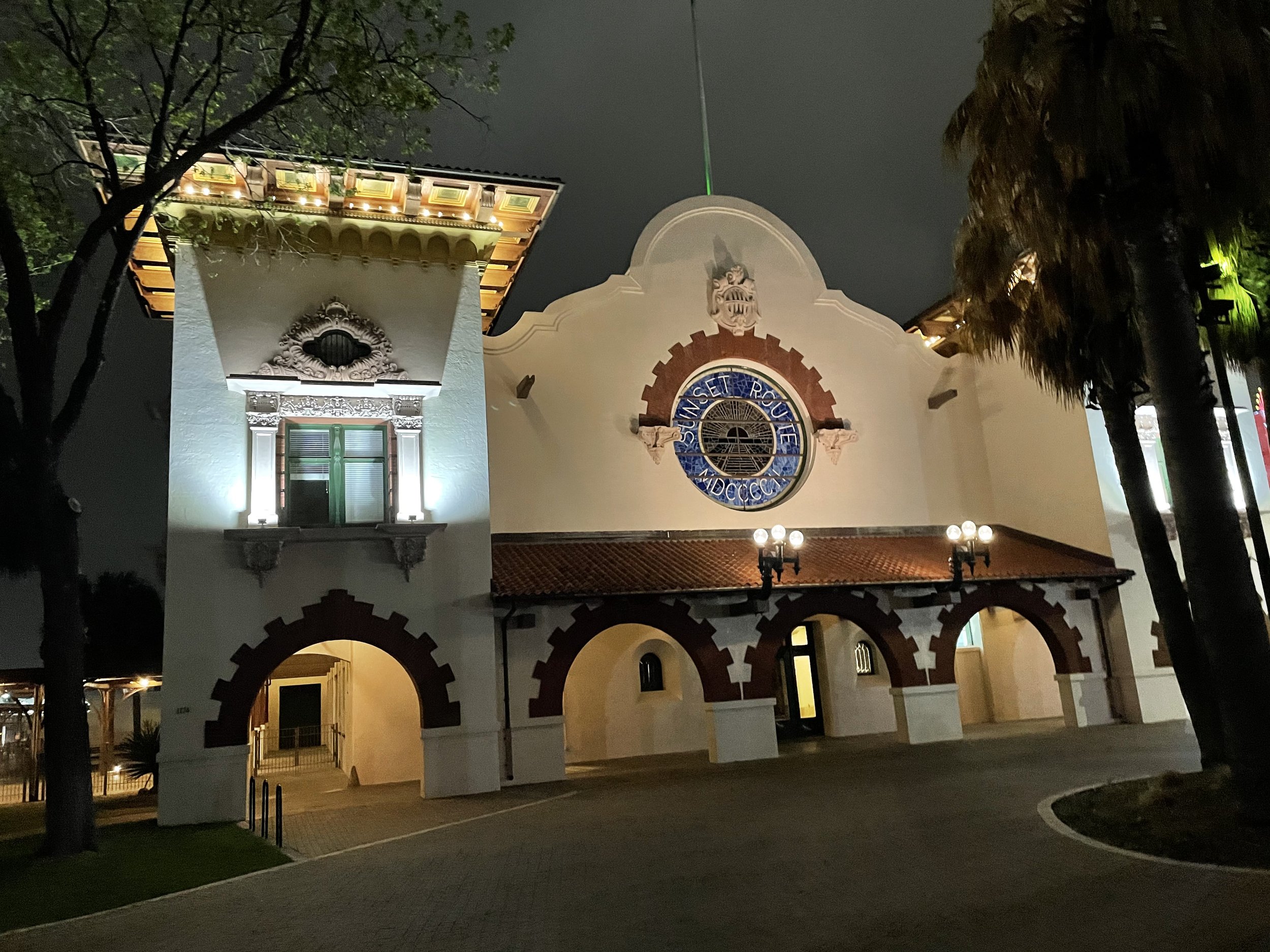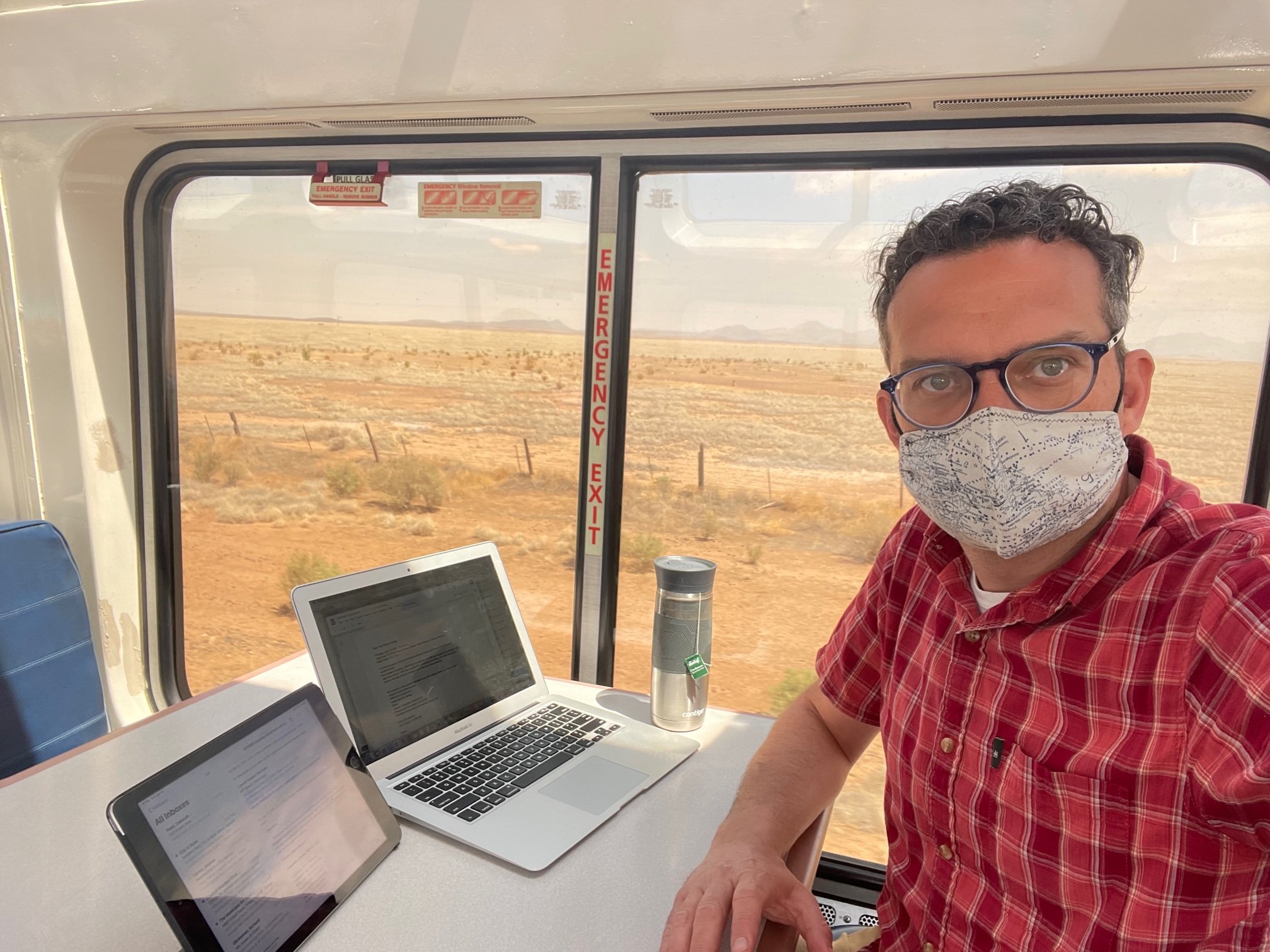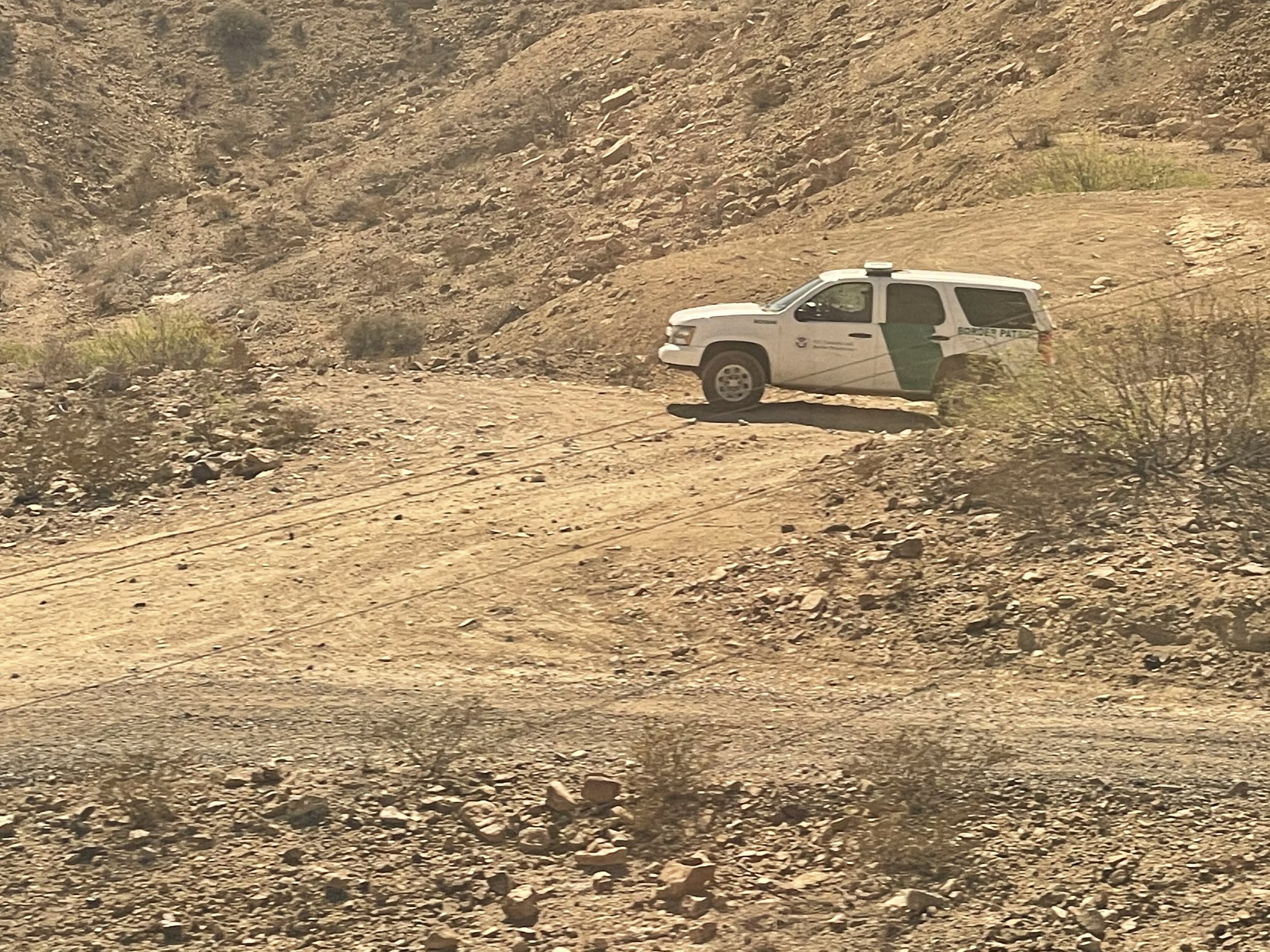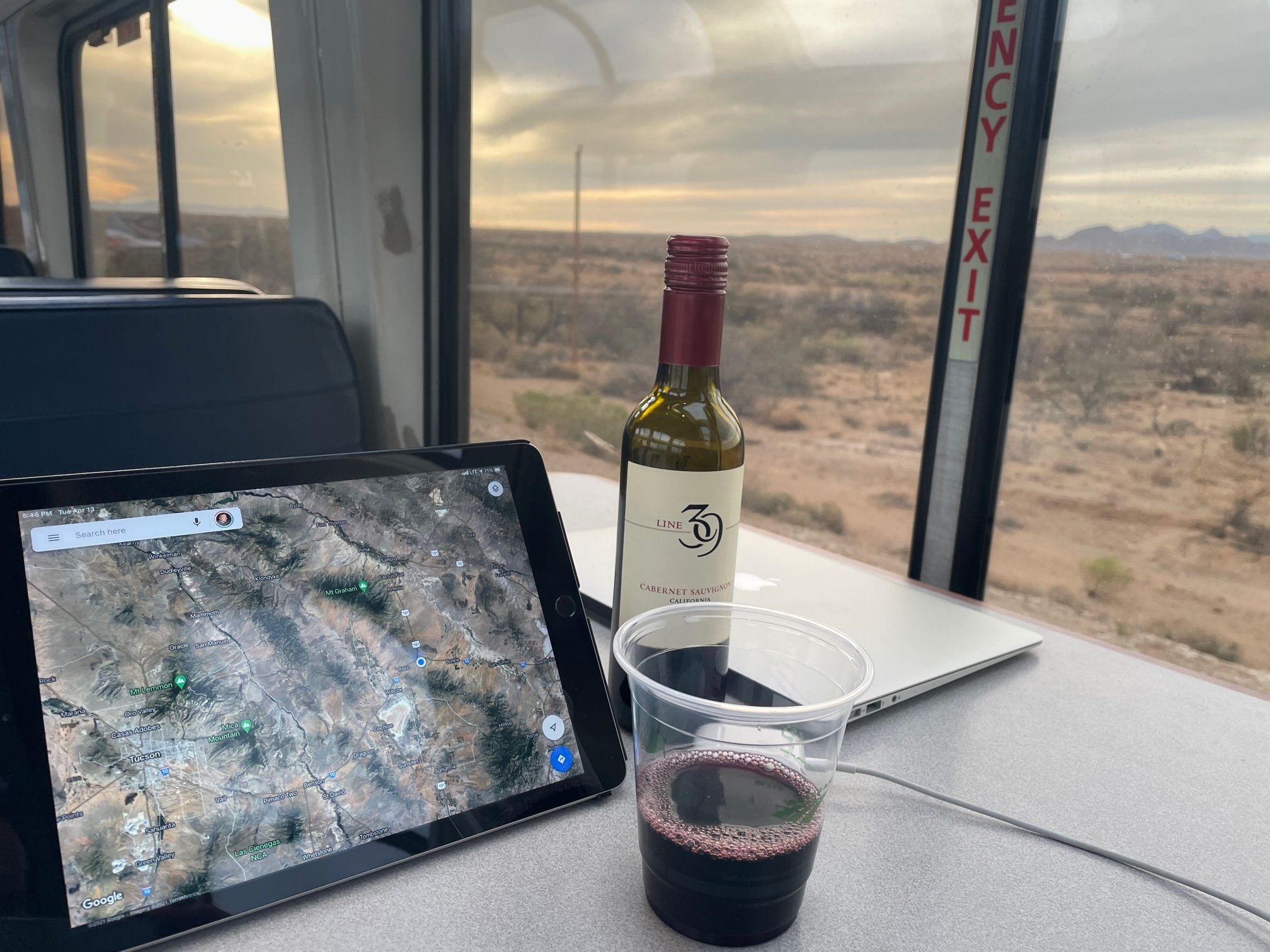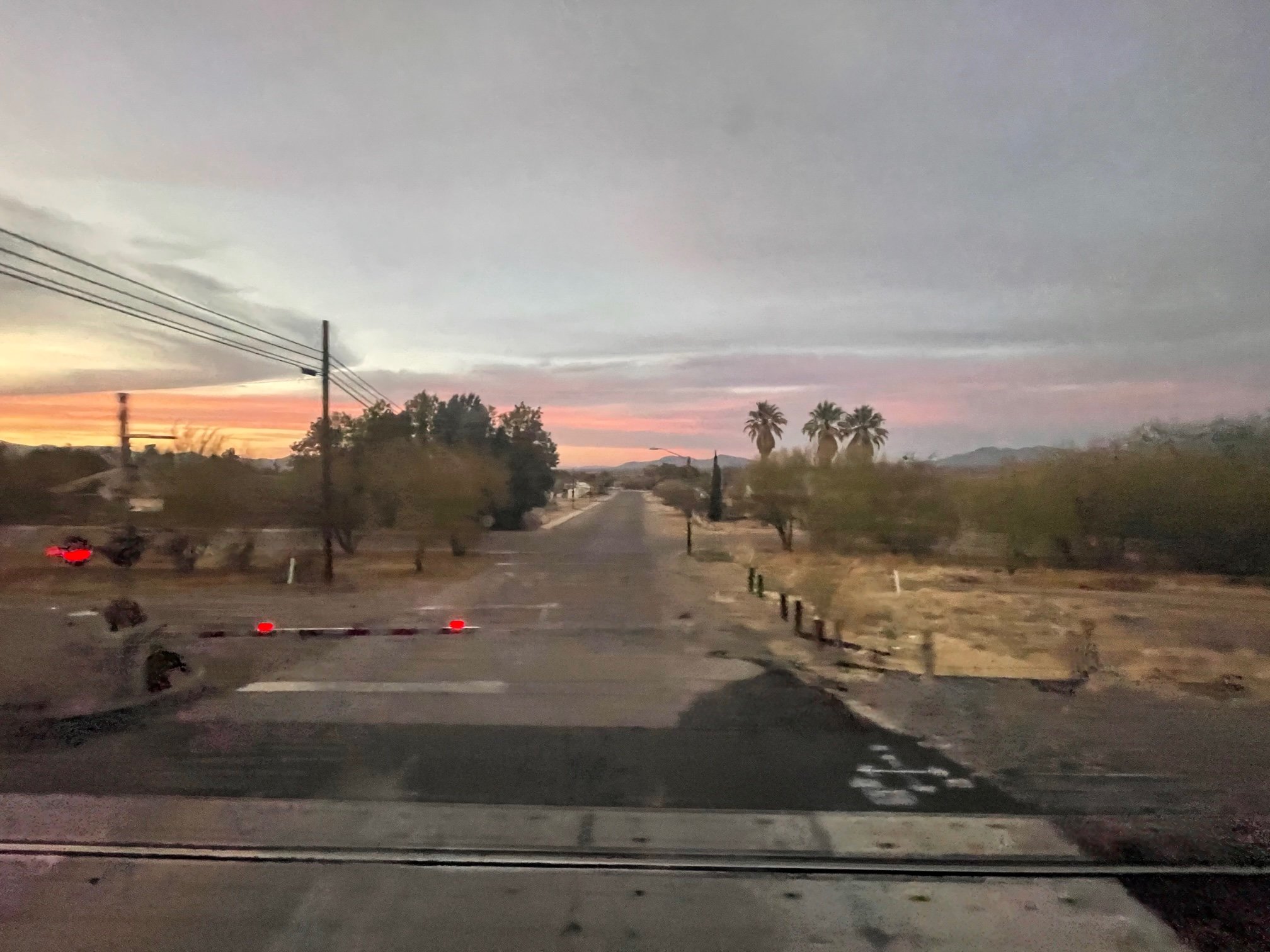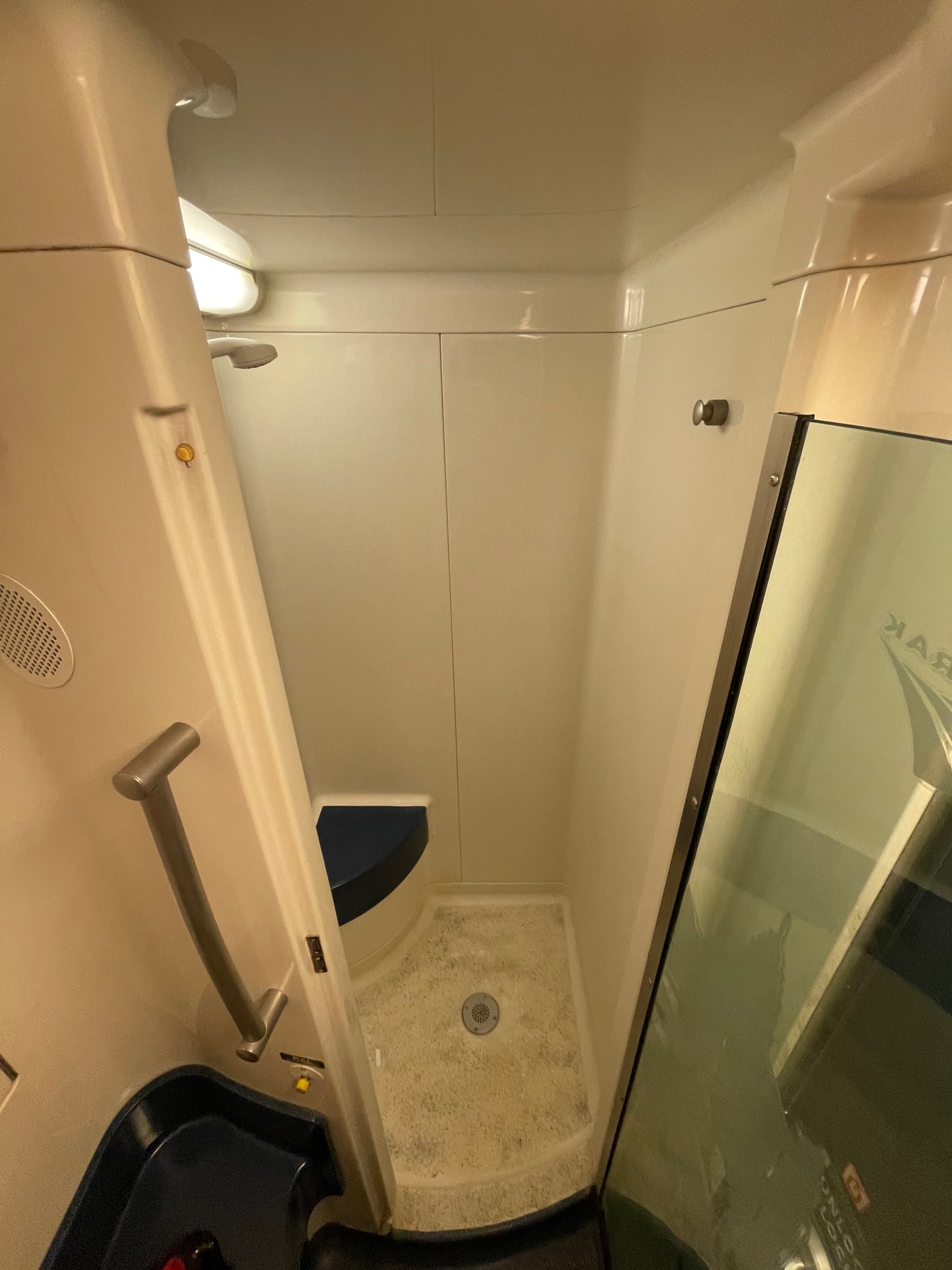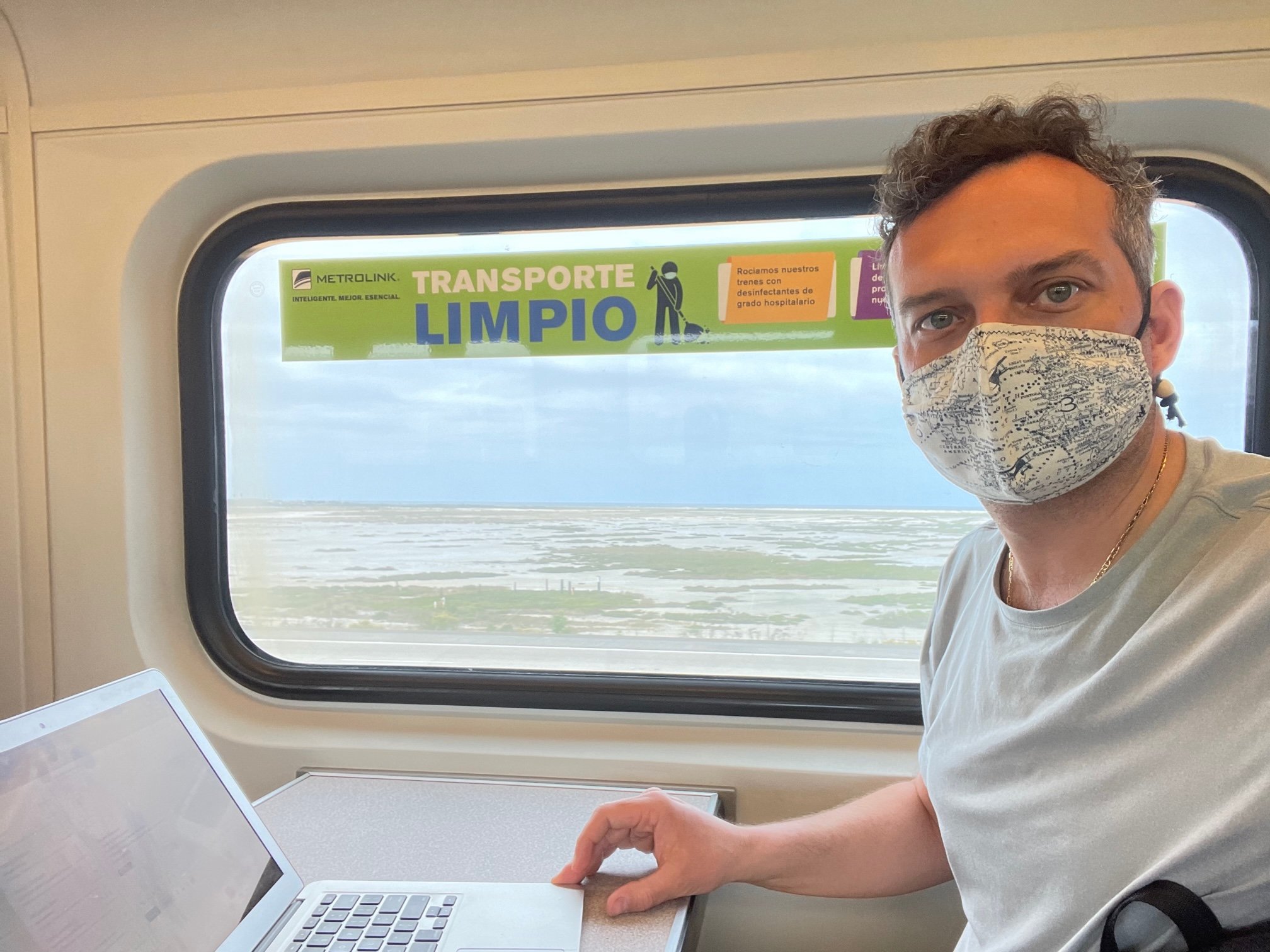The Sunset Limited: New Orleans to Los Angeles
Launched by the Southern Pacific Railroad in 1894, the Sunset Limited is the oldest continuously operated named train in the United States.
Of all the transcontinental Amtrak routes, the Sunset Limited had always interested me the least. It does not offer the mountain grandeur of more northerly routes, but I have found since my very first long-distance train trip that I am fully content gazing at the passing landscape, even if it is monotonous. Louisiana, Texas, Texas and more Texas, followed by the desert of the American Southwest would offer its own beauty, and I would watch all 1,995 miles of it over the course of 45 hours.
The route was also a convenient connection between a long weekend in New Orleans, and a week with my family in California.
As I arrived at the station in New Orleans after five days of eating oysters, crawfish, beignets and more, I was jolted by a text from my boss, an elected official, asking for a Zoom meeting in an hour. Yes, this was a work day for me, and I was not sure whether my boss knew I was working this remotely. I prayed I would have steady service to work effectively.
Train 1 departed New Orleans on time, but at a slow pace.
We crossed the Mississippi River on the Huey P. Long Bridge, a more than 4-mile-long cantilever bridge completed in 1935, just months after the assassination of its namesake. Looking out at the mighty river, I realized that I would be crossing the same river two weeks later, near its source in Minnesota.
After the crossing the Mississippi, the Sunset Limited continued through low bayou and swampland, rarely far from the Gulf Coast.
Past cemeteries and small towns, petroleum refineries and highways, the Sunset Limited made brief stops at Schriever, New Iberia, Lafayette and Lake Charles. My Zoom meeting went without a hitch — and yes, my boss was surprised to see me on a train, but we had a productive conversation.
By early evening, we rolled into the sprawl that is Houston, with bayou changing to suburban warehouses and office parks. The scheduled stop offered about 35 minutes in the station, and I couldn’t help but see if there was a bar I could run to so that I could sample something local. The breweries were just a little too far for my comfort level, but I found R Bar just an eight minute walk from the station. I walked quickly, even jogging at times, up Washington Avenue, a right on Houston Avenue, under the smelly railroad overpass.
At R Bar, I ordered a local Pilsner, downed it, and immediately returned to the station.
The next stop would offer a more leisurely layover, albeit at an insane hour.
At San Antonio, the Sunset Limited from New Orleans links up with the Texas Eagle from Chicago to continue the journey to Los Angeles as one train. While the Texas Eagle arrives at a decent hour in the evening, my Sunset Limited did not arrive until midnight, with a departure at 2:30 am.
I had scoped this out weeks ahead of time, on Google Maps and the Amtraktrains forum. Denny’s was a popular option for many, but I found a bar, Alibi’s Sports and Spirits, that was open until 2 am and just a block from the staton.
I could hear the music before I spotted the entrance, and walked in to find the bar lively for a Monday night. For the first time in 15 months, I actually took a seat at a bar. I asked for something “local and light” and was served an Alamo Listo Light, brewed in San Antonio. Halfway through the beer, I got a little nervous about the packed capacity inside and the semi-adherence to mask wearing. I took my second beer, a Highwheel Betty from Köln, Germany, outside.
At this rate, there was no telling how many I would down in 2+ hours, so, to pace myself, I asked the bartender if it was safe to make the 13-minute walk to the Alamo.
I’m not sure how seriously he considered my question before saying yes, but the streets seemed safe to me, so I walked down East Commerce Street, past the Denny’s I had read about on the forums, over the Riverwalk, and hung a right to find the tiny, illuminated Alamo under the watch of a federal security officer, whose presence startled me.
Back at the bar, I had a few more drinks on the patio, engaged some San Antonians in conversation, closed out my tab and reboarded the Sunset Limited shortly after 2 am.
If Day 1 of the Sunset Limited was all bayou, Day 2 was all desert. A whole lot of it.
Frequent travelers on the Amtraktrains forum told me to be awake for the dramatic crossing of the High Bridge over the Pecos River just west of Del Rio. Despite my late night, I was in fact awake for the crossing. Built in 1892 for the first southern transcontinental railroad, it was at the time the highest bridge in the United States and the third highest in the world.
Just as beautiful was the crossing of the Amistad Reservoir just prior.
Like an oasis, the reservoir seemed to go for miles against the brown desert landscape, with a shoreline that stretched like long twisted fingers into the dry dirt. The reservoir, which takes its name from the Spanish word for friendship, stretches into Mexico. The U.S.-portion is a National Park, offering fishing, hunting, camping and more.
For the rest of the morning and early afternoon we passed through miles and miles and miles of Texas desert.
The Sunset Limited spends about 24 hours in the Lone Star State, from Beaumont to El Paso, another “stretch/smoke” stop for Amtrak passengers, usually marked by the presence of the “burrito lady” selling food to passengers — though I did not see her on my stop.
At El Paso and for miles afterward, the Sunset Limited runs adjacent to the U.S.-Mexico border, at one point just a few feet from a small fence marking the line between the two countries.
From El Paso, the Sunset Limited continues into southern New Mexico, making stops at Deming and Lordsburg, and then into Arizona. I spent much of my time in a mostly empty sightseeing car watching, again, miles and miles and miles of wide open space.
After we crossed into Arizona, along Interstate 10 just before San Simon, an Amtrak employee sitting near me pointed out newly planted pecan orchards. It boggled my mind that trees that consume large amounts of water could be planted here. But reading online, I found that nearly all the world’s pecans are grown in the United States and Mexico, with Georgia, Texas and New Mexico accounting for much of the U.S. crop. The employee also pointed out newly plowed land that would soon become more orchards. (I still question the planting of tree crops considering the intense drought the American Southwest is now experiencing.)
Soon afterward, a woman ran into the sightseeing car to tell the Amtrak employee that a fellow passenger cursed at her daughter over a minor dispute. The employee ran back to the coaches, and as we approached Wilcox, Arizona — population 3,533 and the childhood home of country music artist Tanya Tucker — the train slowed for an unexpected stop, where a police car was waiting to escort the man off the train. We were 84 miles from the nearest big city, Tucson, and I wondered how this man would make it to his final destination, wherever that might have been.
As the sun drew lower toward the horizon, the sky lit up a brilliant orange, with cloud formations made just for this moment.
The train twisted around hills, shifting the setting sun from one side of the train to the other. As the sun drew even lower, the brilliant oranges transformed into subtle pinks, and I could not stop taking photos and video of this moment, sunset aboard the Sunset Limited.
We arrived in Tucson just after dark, and for me this stop presented not only an opportunity to step off the train, but also a change in my accommodations.
Since I was going on my second night aboard a train, I used Amtrak points from a credit card welcome bonus to upgrade to a roomette, a small compartment less than half of the width of the train that would provide me with a bed, access to a shower and a meal in the dining car.
Apart from traveling in a couchette in December 2020 aboard Via Rail’s three night trip from Vancouver to Toronto in December 2000, and a 10-hour daytime roomette on the Coast Starlight in July 2001, this would be my first experience in first class rail travel.
As my train attendant walked me to my room, he told me this would be a much different experience from coach, and that I was now his guest aboard the train. I was afraid this would spoil me — and it did.
But before stepping in my roomette, I used the time in Tucson to sample some local flavor. I ran across the street to a bar, John Henry’s, for a Valley Venom from Helton Brewing Company in Phoenix.
Back on board, I enjoyed my red wine braised beef and a glass of cabernet in the dining car. Because of the pandemic, Amtrak’s meals were no longer prepared on board but instead microwaved. It was still nice to sit down in a dining car and be served a hot meal.
After 36 hours on the train, the shower was refreshing, and more spacious than I imagined, with one area for changing and one area for showering. Stacks of clean towels and small packaged soaps were available, as was spray sanitizer.
Before settling into my roomette, I was able to catch a glimpse of other accommodations, including a bedroom that included its own bathroom and shower and stretched almost the entire length of the train, and one at the back of the car that did stretch the entire length of the train.
As the train approached the Phoenix area, I enjoyed a nightcap of Jack Daniels and did my best to sleep, waking up here and there as we passed Maricopa, again following Interstate 10 into California and past Palm Springs, where we stopped a few hours after the scheduled 2 am time.
I awoke for good in the Inland Empire of California, joined a Zoom meeting for work, and pulled into Union Station just after my southbound Pacific Surfliner departed for my final leg to Oceanside.
Instead of taking the automatic rebooking on the next southbound train, I noticed that a Metrolink commuter train would get me to Oceanside sooner — and cheaper. I bought my $15 ticket, received a refund for my $41 Amtrak ticket, and enjoyed the coastal views of the Pacific Ocean on the way to Oceanside, where I would spend a week with my family before continuing the next leg of the journey.

